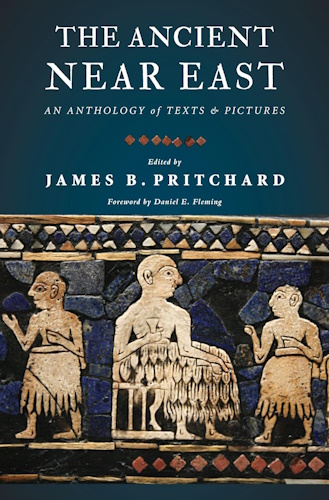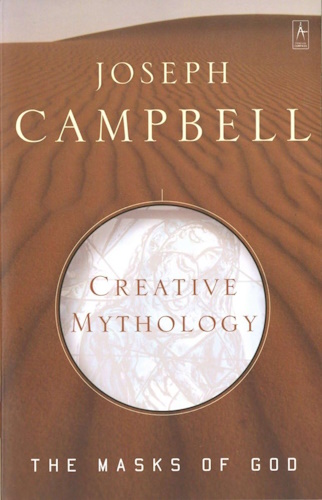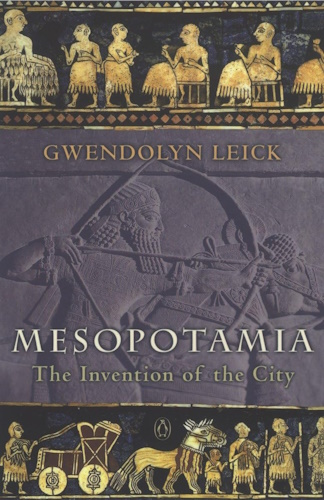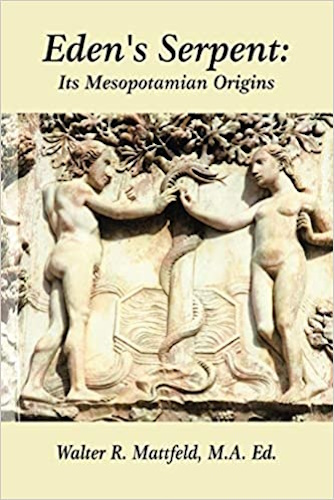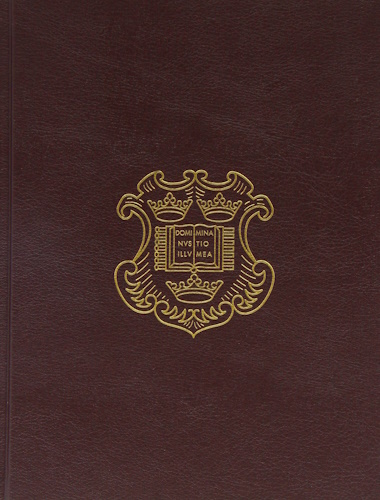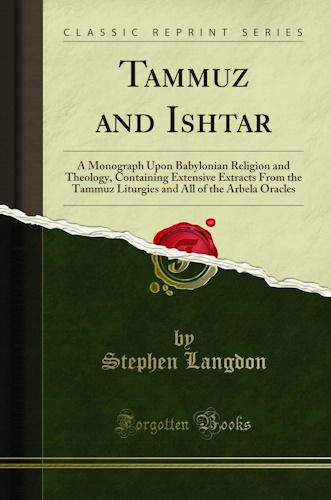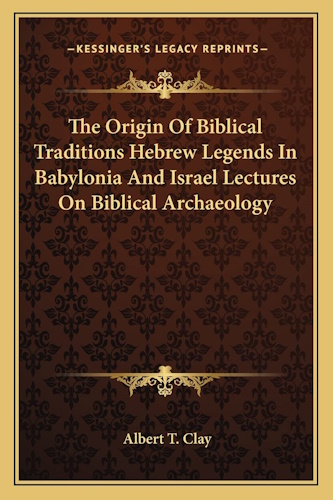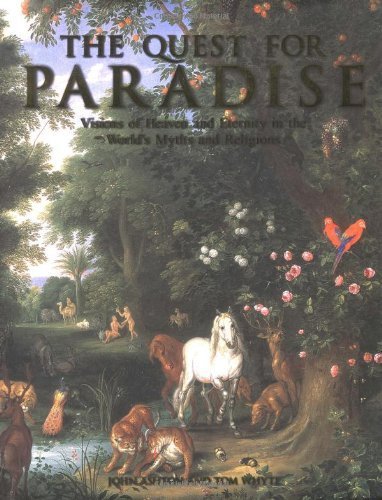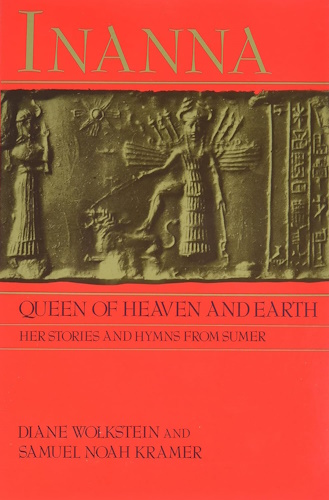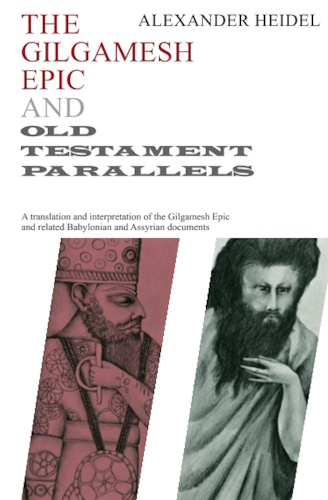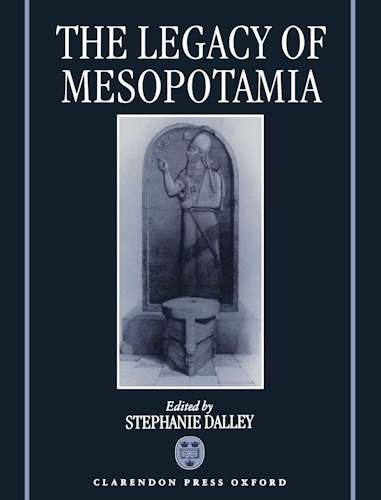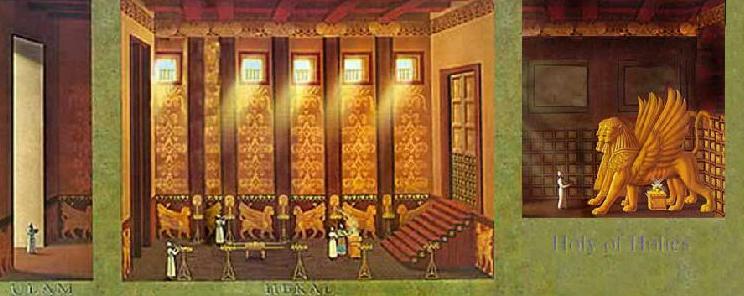![]()
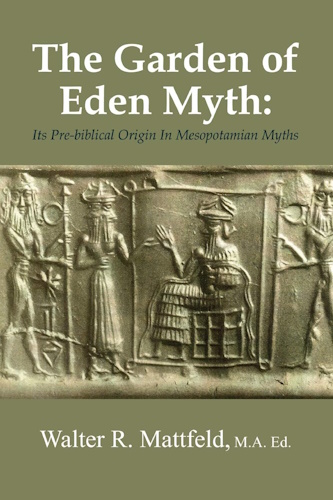
Bible Origins
A Critique
of the Primary History
Genesis-2Kings
being a Hellenistic Creation
of the Hasmoneans
by
Walter Reinhold Warttig Mattfeld y d la Torre, M.A. Ed.
e-mail contact
19 August 2003
Revisions through: 20 April 2004
![]()
I once thought (1990-97) the Primary History might be a Hellenistic composition. Professor Neils Peter Lemche believes that it is Hellenistic while Professor Thomas L. Thompson argues that it is Hasmonean. I eventually abandoned this notion when I discovered that NO sites from Hellenistic times appeared in the Primary History.
What hamlets, villages, towns and cities would I expect to "surface" in a Primary History (Genesis- 2Kings) composed in the course of Hellenistic-Hasmonean era? See below for some sites that are attested as being no earlier than this era. I have not found a single site that came into being later than the 7th century B.C. in the Primary History. The latest site appearing in the Primary History was determined to be Aroer of the Negev, modern Ar`arah (I Samuel 30:28), which was founded in the 7th century B.C. (cf. p. 400. Vol. 1. Gerald L. Mattingly. "Aroer #4." David Noel Freedman, editor.
The Anchor Bible Dictionary. New York. Doubleday. 1992)
Mattingly :
"Ar`arah was excavated between 1975 and 1981 by A. Biran and R. Cohen. They concluded that this 5-acre site was first settled in the 7th century B.C. and was occupied intermittently, until ca. A.D. 70. Though it is possible that further excavations might uncover remains from the 11th or 10th centuries B.C., it does not appear that `Ar`arah was occupied in the time of David."(cf. Vol.1, p. 400, Gerald Mattingly, "Aroer, #4," David Noel Freedman, Editor. Anchor Bible Dictionary. New York. 1992).
I would expect to find at least "a few" of the below place-names in a Primary History "allegedly written in the Hellenistic age." The absence of the below sites should be a "wake-up call" for those advocating a late creation. How will they explain ALL of these sites' NON-APPEARANCE in a Hellenistic creation (Some of these sites, however, DO APPEAR in other Hellenistic compositions, like for instance, Maccabees I-IV)?
The below book or "manual" focuses primarily on Israel from Dan to Beersheba. Along this peripherey appear sites in Lebanon, Jordan, the Arabah and Negev.
My reference is:
J.Monson, et. al. Student Map Manual, Historical Geography of the Bible Lands. Jerusalem. Pictorial Archive. 1st edition, 1979 [distributed by Zondervan Publishing House. Grand Rapids, Michigan] ISBN 0-310-42980-3.
A Listing of Sites which came into being in the course of the Hellenistic and Hasmonean Periods (cf. "Section 15-2, Index of Main Names," J. Monson):
A Mini Archive Reference Number precedes the site:
004 Abila (Gilead); 023 Adasa; 046 Alexandrium/Sartaba; 073 Apollonia; 081 Arbela (Galilee); 085 Ariedela (Gharandel); 087 Aristobulias; 102 Asphar; 292 Docus; 299 Eeitha; 307 Elasa; 315 Emmaus (Nicopolis); 333 Ephron (Gilead); 352 Gadara; 357 Gamala; 359 Garaba; 380 Gerasa (Gilead); 434 Hippias; 567 Malumas; 504 Kedron (Gedrus); 558 Macherus; 564 Mahalol; 579 Masada; 581 Mazraa; 614 Modein; 627 Nadabath; 643 Nessana; 651 Oboda; 652 Odollam; 657 Orda; 662 Pella (existed in LB but not in Iron Age); 666 Pharathon; 693 Ragaba; 728 Samaga; 744 Seleucia (Golan); 748 Sepphoris; 768 Skoufiye.
If somone knows of a site founded no earlier than the Hellenistic period, which appears in the Primary History's biblical narratives, I would appreciate receiving that information.
Another problem is that the allegedly Hellenistic era author, while concerned that his audience may not know that Hebron was formerly called Kiriath-Arba, or that Dan was formerly called Luz, shows NO interest in identifying sites whose names have changed into Hellenistic Greek names. For example, Flavius Josephus, a Jewish Historian of ca. 80 A.D. _did_ show just such a concern, he identified Ezion Geber as being Bernice, and Tadmor as being Palmyra. I find it "odd" that if the Primary History (Genesis-Kings) is a Hellenistic or Hasmonean era composition that its author displayed no interest in identifying Hellenistic site names for his Hellenistic audience.
It was also fashionable for many Hellenized Jews to adopt Greek names, even Jewish High Priests bore Greek names like Aristobolus and Jason. Not a single character in the Primary History bears a Hellenized Greek name. The question arises, why? If the author is writing for a Hellenized audience, why not use such names, certainly it would raise no eyebrows? I realize some might argue that the author wanted the text to "appear to be archaic" and thus consciously avoided the use of Greek in this work.
Scholars who have studied the Primary History (Genesis-2 Kings) have observed that Greek words and idioms are very rare or practicably non-existant. If this is a Hellenistic/Hasmonean era work, how does one account for this fact? The only Greek names are Javan (Archaic Greek: Iawan) and Japheth (Iapetos) in Genesis' Table of Nations. These few names can be accounted for by the fact that Greek mercenaries were stationed in PRE-EXILIC Judah under the Saitic Pharaohs who occupied the country and collected tribute. Also Greek pottery of the 8th/7th century B.C. is attested in Judah, so a FEW Greek names are not to be wondered about. But in the Hellenistic Era of circa 333-100 B.C. surely there shoud be a LOT MORE Greek idioms and usages, but there aren't. Yet Greek words appear in later Jewish works like Maccabees I-IV and the Pseudepigrapha of the 2d-1st century B.C.
When all the above anomalies are "factored in" it appears to me highly unlikely that the Primary History is a composition of the Hasmonean world and Hellenistic Times. I understand it was written about 560 B.C. in the Exile, as the author knows of no Babylonian king after Evil-Merodach who reigned at that time (cf. 2 Kings 25:27).
The old adage that a composition reflects the age in which it was written seems relevant here. If the Primary History (Genesis-Kings) was written in the Hellenistic age one ought to be able to find Hellenistic modes of thought and belief in the work.
My research on the "origins" of the New Testament, lead me to conclude that where it differs from Judaism this difference can be traced to Hellenistic Greek metaphyisical thought, which was embraced to some degree by various individuals and sects of a Hellenized Judaism circa the 4th Century B.C. to the 3rd century A.D.
No-one denies that the New Testament was composed in the Hellenistic era (a world after Alexander the Great's conquest ca. 333 B.C.).
What many are NOT aware of is the Hellenistic Greek thought in this work.
One of the "differences" noted by professional scholars who have studied the Hellenistic Age is that before Alexander the Great, the Greek religious emphasis was a "polis [city-state] centered religion." The needs of the community were to be met by religious belief, rituals and customs. This changed under Hellenism, religion began to focus on the INDIVIDUAL'S NEEDS, and the PERSONAL salvation of that soul vs. a concern for the well-being of the community or nation. The New Testament reflects this Hellenistic concept, stressing that each individual in order "to be saved" must confess Christ is the Savior on a case by case basis. There is no emphasis here on the Nation being saved, but of individuals. The Primary History stresses salvation is for ALL Israel, no case is argued by the prophets for individuals, on a case by case basis, needing to believe in a Messiah to be saved.
In the Hellenistic era the Greeks understood that the gods had assigned Daimons/Daemons to rule over mankind and bring justice to the world; noting the existence of evil in the world, some of these Daimons came to be later blamed for inciting man to do evil. This is _not_ a concept found in the Primary History. There is _no_ mention of Satan and his demons "in control of the earth and of all mankind." But these notions do appear for the first time in the Jewish literature of the "Inter-Testamental Period," which was composed IN A HELLENISTIC WORLD, revealing that certain Jews had accepted Greek notions and amalgamated them to God and the Messiah.
Salvation in the Primary History is about "saving" Israel (the community) from its mortal enemies, Ammonites, Philistines, Moabites and Edomites, it knows nothing about a Messiah to be sent from heaven to save the world from Satan and his demons who are in control of everyone.
In the New Testament Christians are asked to sell all they possess and take up the cross of Christ and seek after virtue rather than wealth. They are to prove through their suffering, and self-denial, their love for Christ. Their rewards for doing such will come in a life after death, when they are drawn to the bosom of Abraham, and dwell in the presence of the gods, God the Father and Christ as God (the Logos or Word of the Old Testament).
Plato taught that the Good Philosopher must practice self-denial and eschew the lusts of the flesh and seek after virtue. His reward will come after death when he will be allowed to dwell in the company of the gods.
The Primary History does not teach any of the preceeding, rather it claims that God will shower the obedient with riches and wealth, healthy children, herds, and bountiful harvests. Israel shall increase in numbers like the stars in the heavens. God rewards his people in this life, NOT in a life to come after death.
My research suggests that Christianity gets these notions from Cynic, Stoic and Platonic Greek schools of thought which taught that personal virtue was more important than wealth. And "proof" of one's attempt to be virtuous was one's personal poverty (as enunciated by Socrates).
Socrates also taught that man "should not return evil for evil" lest the judges of the underworld convict a man. This notion surfaces in Christ's teaching of "turning the other cheek", and he even notes that "before" it was taught "an eye for an eye and a tooth for a tooth." So here we have an acknowledgement of a "new" insight NOT taught in the Primary History.
I deal with the many ways that Christianity differs from Judaism because it absorbed Hellenistic Greek thought from Hellenized Jews, notions which were opposed by the more conservative Rabbis. Please see my articles on my New Testament Page for the in-depth treatment.
Suffice it to say here, the New Testament, written in the Hellenistic period DOES REFLECT HELLENISTIC THOUGHT, whereas the Primary History, written ca. 560 BCE (as I have argued elsewhere) DOES _NOT_ REFLECT HELLENISTIC THOUGHT.
Professor Philip Davies of Sheffield, England, understands that the Primary History was composed in the Persian Post-Exilic era. The problem I have with this argument is that no Persian words appear in the Primary History. Persia is not listed in Genesis' Table of Nations (Ge 10). Persian names for geographical features are also absent. Again, I realize some might argue that the author wanted the text to appear archaic and thus avoided the use of Persian words.
For example, it is recognized by most scholars that the Septuaginta is a Hellenistic era creation. of ca. the 3rd century B.C. The clues? Its written in Hellenistic Greek. Now the Greeks defeated the Persians under Alexander the Great ca. 330 B.C. Are there _any_ Persian words in this Hellenistic composition? Yes. The word "paradise" is understood to be actually derived from a Persian word meaning "a fenced enclosed garden." Another word is the river Tigris, again understood to be a Greek borrowing of a Persian word, Tigra. In the Massoretic text, the Persian Grecianized word Tigris is not used, the river is called Hiddekel. So, in the Hellensitic era Septuaginta we find not only Greek words but Persian words. The Massoretic Text of the Primary History (Genesis-Kings) is devoid of both Persian and Greek words, with the exception of Javan and Japheth, which have above been earlier explained as from Judaism's exposure to Greek mercenaries serving in Pharaoh's Saitic period armies of the 7th century B.C.
Professor Niels Peter Lemche of Copenhagen, Denmark understands that the Primary History is a Hellenistic composition, while Professor Thomas L. Thompson (also of Copenhagen) sees it as a 2d century BCE Hasmonean creation.
As noted earlier, above, there are no Greek words or idioms. No sites are rendered into Greek as was done by the Jewish historian Josephus (he rendering Ezion Geber as Bernice, Tadmor as Palmyra and Edom as Idumaea), nor are there any personal names of the Hellenistic era for any of the characters appearing in the Primary History. The 'latest" foreign names we encounter are Babylonian, like Nebuchadrezzar and one of his later successors Evil-Merodach. The text does not even end in the Persian or Hellenistic or Hasmonean periods which strikes me as strange. Surely a better ending could be thought up than leaving Judah in Exile with her king recently released from prison by a minor no-body king like Evil-Merodach (2 Kings 25:27). If the Primary History is Persian why not proclaim how God has used Cyrus to set free his people (like Deutro-Isaiah, Isa 44:28 & 45:1), showing he is faithful to his promises (the anonymous author of 1 & 2 Chronicles ends his story with Cyrus the Persian, proclaiming liberty and justifying God's promise via his prophet Jeremiah, 2 Chr 36:20-23)? If the Text is Hasmonean why not end the story with how God has showered his faithful with victories over the hateful Seleucid Greek oppressors, giving victory to the Maccabees as in the Book of Maccabees, ending with praises for God's being faithful (4 Maccabees 18:1-23)?
The failure to find Persian or Greek words, idioms, names of locations, personal names, nor is there an "ending" or "conclusion" in the Persian, Hellenistic Greek , or Hasmonean period for the "story's end," but instead ending the story with the release of a Judean king from prison in Babylon ca. 560 B.C. by Evil-Merodach suggests to me that the Primary History is _not_ a Persian, Hellenistic or Hasmonean era composition, its Exilic, written ca. 560 B.C. in the days of Evil Merodach (Babylonian: Amel-Marduk) who reigned circa 562-560 B.C.
Professor Davies in defending his research noted that he seeks an answer as to "the Why, When and How" of the Hebrew Bible's composing. He finds the answers in the milieu of the Persian period; most probably the same questions are of interest to Lemche and Thompson, except for them the milieu is either Hellenistic or Hasmonean.
Their query is certainly legitimate, that is, seeking answers to the Why, When and How of the Hebrew Bible and, the Primary History.
For me, "the Why?" is that the nation of Israel is in Exile, the northern kingdom carried off by the Assyrians ca. 721 B.C. and Judah ca. 587 B.C. The anonymous author feels a need to explain to his people WHY they are in Exile. For him the answer is simple, the nation DESPISED its God. This concept is found in the literary works of the Neo-Assyrians and Neo-Babylonians ca. the 9th-6th centuries B.C., that is to say, national gods are portrayed as ravaging their own peoples by bringing foreign armies against the land because they feel their people DESPISE them (cf. my article, Wrathful Gods and the Day of the Lord). The answer as to "When?" is given in Deuteronomy 30:1-10 and 2 Kings 25:27. The nation will be restored AFTER national repentence in the Exile. We know this repentence did NOT happen as revealed in the books of Ezra and Nehemiah. The story's end is that the Judaean king has been released from prison and the narrator apparently regards this act of mercy from the Babylonian oppressors as a sign that God is merciful and may soon cause the Babylonians to release his people, if only they repent. The "How?" is obviously concerned with the setting down to pen and paper the account. The themes and imagery appearing in the Primary History, are, for me, mirrored in literary motifs of the Neo-Assyrian and Neo-Babylonian periods. Cf. the following articles noting the "parallels," Firey Gods, Wrathful Gods and the Day of the Lord, and Bombastic Praise and Monotheism.
I have read the works of Davies, Lemche and Thompson, and I must say that I am disappointed to find that these scholars do NOT choose to address "the apparent parallels" between the Primary History's "imagery" and that found in the literary works of the Neo-Assyrian and Neo-Babylonian eras. Their focus strikes me as _somewhat one-sided_ in building the case for either a Persian, Hellenistic or Hasmonean milieu. It would appear to me that "a need exists" for them to present a _more balanced critique_, addressing as well the literary parallels appearing in works of the 9th-6th centuries B.C. and _THEN_ giving their reasons for dismissing these works as valid indicators for answering "the Why, When and How" of the Primary History's composition date.
![]()
![]()
Disclaimer:
Some material presented will contain links, quotes, ideologies, etc., the contents of which should be understood to first, in their whole, reflect the views or opinions of their editors, and second, are used in my personal research as "fair use" sources only, and not espousement one way or the other. Researching for 'truth' leads one all over the place...a piece here, a piece there. As a researcher, I hunt, gather and disassemble resources, trying to put all the pieces into a coherent and logical whole. I encourage you to do the same. And please remember, these pages are only my effort to collect all the pieces I can find and see if they properly fit into the 'reality aggregate'.
Personal Position:
I've come to realize that 'truth' boils down to what we 'believe' the facts we've gathered point to. We only 'know' what we've 'experienced' firsthand. Everything else - what we read, what we watch, what we hear - is what someone else's gathered facts point to and 'they' 'believe' is 'truth', so that 'truth' seems to change in direct proportion to newly gathered facts divided by applied plausibility. Though I believe there is 'truth', until someone representing the celestial realm visibly appears and presents the heavenly records of Facts And Lies In The Order They Happened, I can't know for sure exactly what "the whole truth' on any given subject is, and what applies to me applies to everyone. Until then I'll continue to ask, "what does The Urantia Book say on the subject?"
~Gail Bird Allen
![]()
![]()

